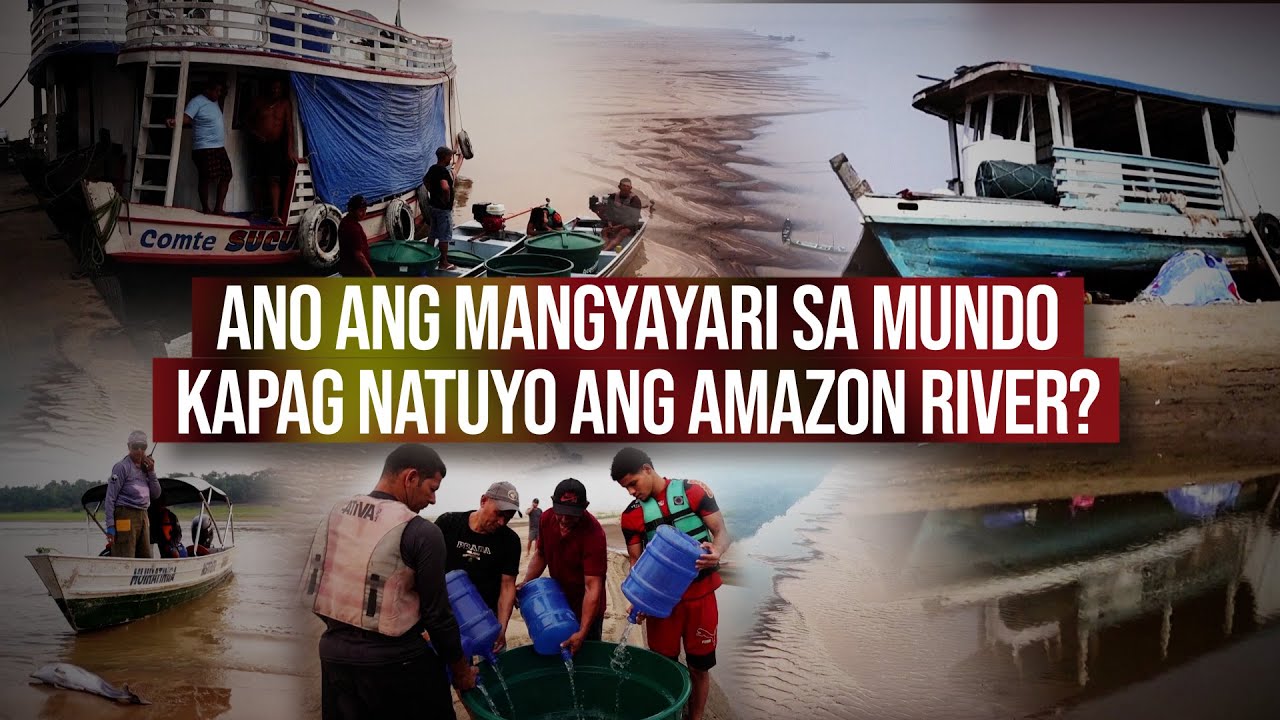Crisis in the Amazon: Will the largest rainforest in the world survive? - BBC World Service
Summary
TLDRThe Amazon rainforest is facing its worst drought on record, with rivers and lakes drying up, isolating villages and endangering wildlife. Communities struggle with water shortages, crop failures, and dangerous travel conditions. Thousands of dolphins have mysteriously died in overheated waters, and scientists fear the forest may be nearing an ecological tipping point. Fires and deforestation are contributing to its decline, and experts warn the Amazon may not recover if droughts continue. The region is a crucial carbon sink and its deterioration could have catastrophic effects on global climate stability.
Takeaways
- 🌊 The Amazon rainforest is experiencing its worst drought on record, affecting rivers, lakes, and streams.
- 🚤 Communities that rely on rivers for transportation, such as Oliveira Tikuna's village, are struggling to reach vital resources.
- 🌡️ Brazil is undergoing an extreme heatwave, exacerbating the effects of the drought.
- 🚱 Many Amazonian communities, including Oliveira's, are struggling with access to clean water for bathing and crops are failing.
- 🐬 Dead dolphins have been found in major lakes, with water temperatures reaching 40.9°C, higher than the body temperatures of both humans and dolphins.
- 🔥 Fires are increasing in frequency, with the Amazon's primary forest seeing more wildfires due to the dry conditions, creating hazardous smoke.
- 🌳 Scientists are concerned that the Amazon may reach a tipping point where it can no longer sustain itself, leading to a feedback loop of forest die-off.
- 😨 Residents are increasingly worried about the future, as the drought and climate changes are becoming more frequent and severe.
- 🌍 The Amazon plays a critical role in global climate regulation, storing 150 billion metric tonnes of carbon, and its degradation poses a threat to the planet.
- 🆘 Experts and local communities acknowledge that human actions and deforestation have contributed significantly to the crisis, and the forest is now 'screaming for help.'
Q & A
What is the main issue discussed in the script?
-The script discusses the severe drought in the Amazon rainforest, its impact on the environment, local communities, and wildlife, and concerns about the potential tipping point for the forest's survival.
How has the drought affected local communities in the Amazon?
-The drought has severely impacted local communities by limiting access to clean water, affecting crops, and making transportation to and from cities difficult. Some villagers are cut off, and there is an increased risk of dangerous encounters with wildlife like snakes and alligators.
What unusual event involving dolphins occurred during the drought?
-In two major lakes, dolphins were found dead in large numbers due to unusually high water temperatures, reaching 40.9°C, which is higher than the body temperatures of both humans and dolphins.
How does the drought potentially signal a tipping point for the Amazon rainforest?
-Scientists fear that the drought and deforestation could lead to a tipping point where the Amazon loses its ability to sustain itself by creating its own rain. If the forest reaches this point, it could enter a feedback loop of rapid deterioration, turning parts of it into savannah.
What is the impact of fires in the Amazon mentioned in the script?
-Fires, often started to clear land for planting, have been burning out of control due to the dry conditions. The script mentions that there have been more fires in untouched parts of the forest, contributing to its degradation.
How has deforestation contributed to the current situation in the Amazon?
-Since the 1970s, around 17% of the Amazon has been deforested. If deforestation reaches 25% and global temperatures rise above 2.5°C, scientists warn that the Amazon could hit an irreversible tipping point, threatening its survival and the rainfall it provides to millions of people.
What role does the Amazon play in regulating the global climate?
-The Amazon helps regulate the global climate by storing around 150 billion metric tonnes of carbon and producing rainfall. If the Amazon were to collapse, it would lead to a significant increase in carbon in the atmosphere and disrupt weather patterns worldwide.
What are the long-term concerns if droughts like this continue in the Amazon?
-The concern is that repeated droughts, each worse than the last, will prevent the forest from fully recovering between events. If this trend continues, parts of the Amazon could transform into savannahs, and the forest's ability to function as a carbon sink and rain generator could be permanently compromised.
What signs of ecological distress are already visible in the Amazon?
-Signs of ecological distress include the mass death of dolphins, widespread forest fires, defoliation of canopies, and large-scale plant mortality. These indicators suggest that the forest is struggling to recover from the drought.
What is the emotional tone of the people living in the Amazon regarding the environmental changes?
-The people living in the Amazon express deep concern, fear, and a sense of helplessness. They recognize their dependence on the forest and water, and they feel the urgency of the situation as they see dramatic changes happening faster than expected.
Outlines

このセクションは有料ユーザー限定です。 アクセスするには、アップグレードをお願いします。
今すぐアップグレードMindmap

このセクションは有料ユーザー限定です。 アクセスするには、アップグレードをお願いします。
今すぐアップグレードKeywords

このセクションは有料ユーザー限定です。 アクセスするには、アップグレードをお願いします。
今すぐアップグレードHighlights

このセクションは有料ユーザー限定です。 アクセスするには、アップグレードをお願いします。
今すぐアップグレードTranscripts

このセクションは有料ユーザー限定です。 アクセスするには、アップグレードをお願いします。
今すぐアップグレード関連動画をさらに表示

Ano ang mangyayari sa mundo kapag natuyo ang Amazon River? | Need To Know

Amazon’s indigenous people hit by record forest fires in Brazil | BBC News

Unsolved Mysteries of Amazon Rainforest | Dangerous Animals of Amazon Rainforest | Muz Studio

The Amazon in 1 Minute | Nas Daily

Greenpeace: Amazônia

Flying Rivers - The Water Brothers
5.0 / 5 (0 votes)
